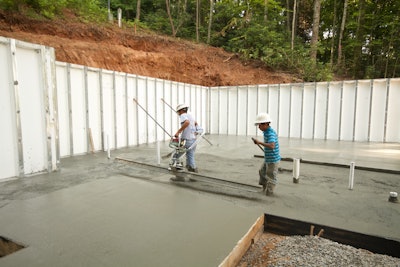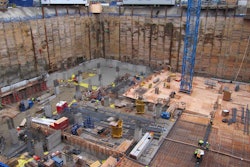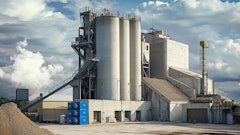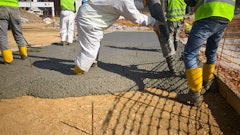
Question: We have a project nearing completion where we prepped for a 3.5-inch thick floor slab. We ordered and placed enough concrete to justify the measurements and now the homeowner is debating the thickness of his basement slab. The owner cored a hole in the bathroom area and that spot measured only 2.75-inch thick. Is there a commentary or a standard on this? We believe the thickness is very challenging to control perfectly when the sub-grade consists of pea-fill. – Contractor (Indiana)
Answer: This issue is a common application of the conflict between minimum performance requirements and recognized construction tolerance. It is both natural and practical to identify the necessity of tolerance during construction as long as life safety, performance quality or durability is not put at risk. This is why code minimums have been created. Tolerances, however, are not identified by the general building code, in this case the International Residential Code (IRC) as they are often established by reference to approved documents. In the case of concrete construction, ACI 117 Standard for Tolerances is the primary referenced document.
In that document for cast-in-place slabs on ground there are three applicable tolerances:
4.4.1 Top surface of slabs Slabs-on-ground........................................ ±3/4 in.
4.4.5 Fine grade of soil immediately below slabs-on-ground...............±3/4 in.
In these two tolerances, the recognition of the challenges faced between top surface and bottom surface control is placed. The top surface is a measure of finishing technique and placement accuracy while the bottom surface is a measure of the subgrade condition and the variability of aggregate compaction and size or soil excavation. This second tolerance, as noted in the commentary for this section, is specifically established for the sake of facilitating installations of slabs that can comply with the thickness requirements of a code yet taking into consideration the impact of the prepared subgrade. The final tolerance from ACI 117 provides:
4.5.4 Thickness of slabs-on-ground
Average of all samples ..................................... –3/8 in.
Individual sample.............................................. –3/4 in.
Here the thickness of the slab is directly addressed. Two points are raised with these tolerances.
The first is that any one section of a slab may have a tolerance applied to it. In the event that a single area falls out of tolerance, or if there is concern for a considerable amount of the slab to be affected, the sampling of the slab may proceed in order to ensure that the overall element doesn’t fall outside of an average. This is intended to provide for the performance of the slab over the entire area. Correspondingly, this tolerance section continues to provide in commentary, information to direct the sampling of a slab concerned to be out of tolerance in its thickness. Perhaps the most applicable to a residential basement application would be the following provision:
4.5.4.1 Minimum number of slab thickness samples,
when taken, shall be four (4) for each 5,000 ft2 or part
thereof.
In other words, if there is enough of a concern to warrant the sampling of the thickness through the taking of cores, only four are necessary within a large size home. The average of these four thickness should not vary by more than 3/8 inch from the specified minimum thickness, which the IRC provides as 3.5 inches.
Absolute minimum thickness for a concrete slab as provided by the IRC is only a portion of the information to consider. This requirement coincides with the minimum concrete strength requirement found in Table R402.2 of 2,500 psi. As a minimum requirements standard, the IRC does not provision for increased strength or other design decisions in its prescriptive criteria. Instead, IRC R104.11 establishes that the minimum provisions of the code can be waived based on the review and interpretations of provided information supporting an alternative position.
Slab Thickness Tolerance (ASCC Position Statement #9) published by the American Society of Concrete Contractors further defines the necessity of acceptable tolerances for concrete slab construction. It recognizes that such variations in slab thickness are generally not issues of strength deficiency. While the paper sets forth information about the acceptable averages for deviations, perhaps the most supportive statement is that for increases in concrete strength compensating for decreases in slab thickness. This can also be applied to average deviations in slab thickness. Likewise, the subgrade k-value or the compaction level may also be increased to allow for standard deviations in slab thickness.
Achieving the intended performance of concrete slabs is important. Understanding the points of control and alteration in approach to adapt to changes in site conditions and other factors is important to provide quality assurance. These also make the conversation much easier to move toward positive and constructive resolutions when challenges in the field arise.
Ed. Note: Want to know more? Contact CFA Executive Director, Jim Baty at 866-232-9255 or by email at [email protected]. The CFA is a national association with the mission to support the cast-in-place contractor as the voice and recognized authority for the residential concrete industry.
References:
1. 2015 International Residential Code For One- and Two-Family Dwellings published by the International Code Council, Inc., 4051 West Flossmoor Road, Country Club Hills, IL 60478-5795 | Phone: 888-422-7233 | www.iccsafe.org
2. Specification for Tolerances for Concrete Construction and Materials (ACI 117-10) and Commentary published by the American Concrete Institute, 38800 Country Club Drive, Farmington Hills, MI 48331 | Phone: 248-848-3700 | www.concrete.org
3. Slab Thickness Tolerances, ASCC Position Statement #9 published by the American Society of Concrete Contractors, 2025 S. Brentwood Blvd., Suite 105, St. Louis, MO 63144 | 866-788-2722 | www.ascconline.org








![[VIDEO] EDCO Product Application - Carpet, Mastic Removal with Magna-Trap Floor Grinder](https://img.forconstructionpros.com/files/base/acbm/fcp/image/2015/12/default.565de0f74693a.png?auto=format%2Ccompress&fit=crop&h=167&q=70&w=250)











